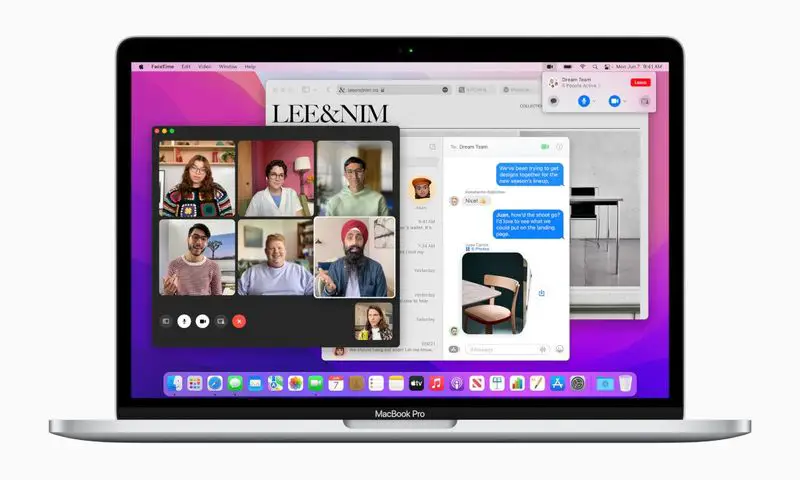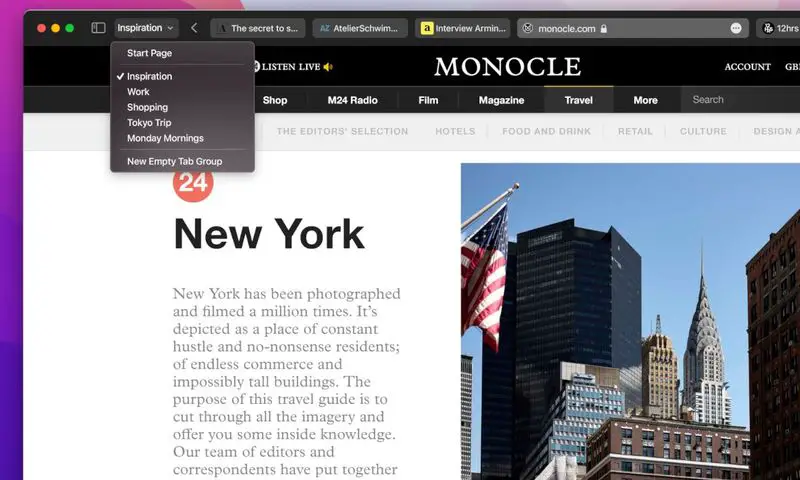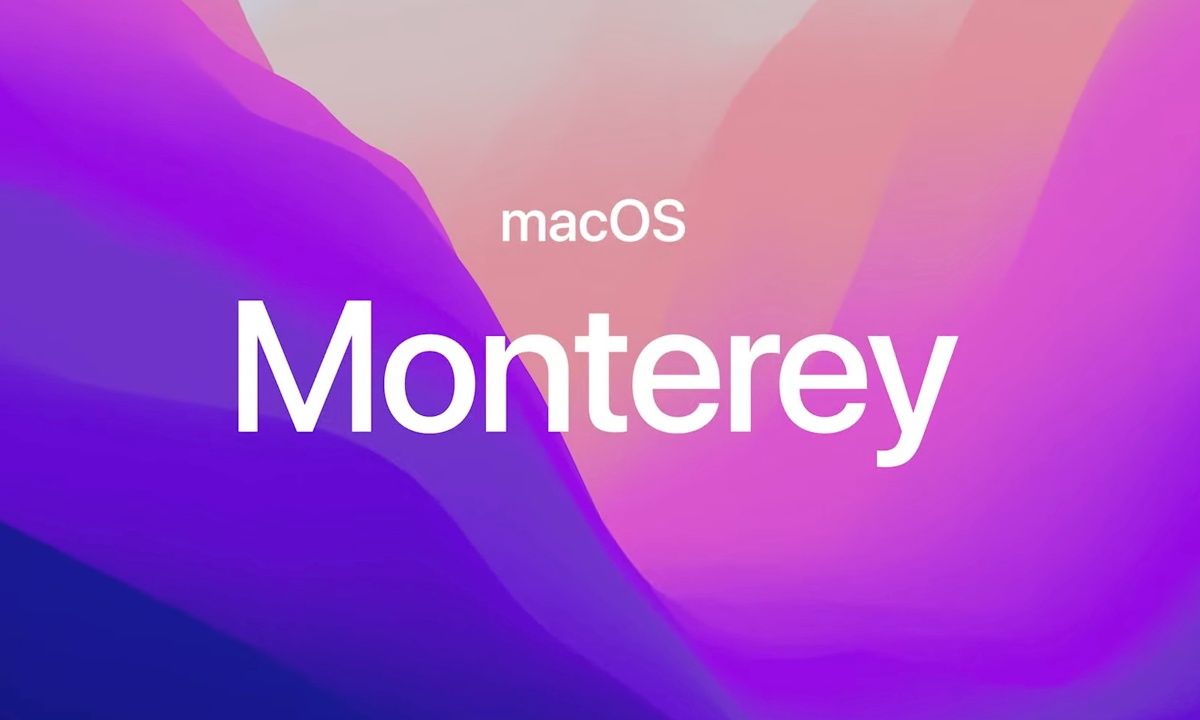After the presentation of iOS 15 and iPadOS 15, the third highlight of the evening was undoubtedly macOS 12 or macOS Monterey, a name with a long tradition for the new version of its operating system for PCs.
macOS Monterey is the successor to macOS Big Sur, with which the company debuted its CPUs and gave a good overhaul to the system design, increasing color and transparency and resembling the iOS style. This time, however, the new features it brings are not so colorful but focus on functionality.
macOS Monterey brings new features
macOS Monterey will feature several of the new app-related accessibility features that iOS 15 has received, such as spatial sound, voice isolation in Facetime video calls, or the ability to invite more participants by sharing a link -valid for any operating system, as it works through the web browser- to join the conversation.
Speaking of sharing, macOS Monterey includes new features such as SharePlay, with which to share content -audio, video, etc- or even the screen with other users in floating window mode (PiP); another option that saves all content shared in the Messages application in the same folder; and let’s not forget the arrival of AirPlay, so it is also possible to send content to other Apple devices.

One of the most striking new features of the afternoon, exclusive to macOS Monterey, goes by the name of Universal Control and is generating mixed opinions. Broadly speaking, Universal Control allows you to interconnect Apple devices such as Mac, MacBook, and iPad, facilitating their control in unison with the same mouse… That is, with the same cursor.
To give you an idea, Universal Control works similarly to a computer with multiple monitors, but here with different devices and systems. Let’s say you have a Mac in the middle of the table, a MacBook on the left, and an iPad on the right: well, when you move the cursor to one edge or the other, it will ‘manifest’ on the corresponding device.
In short, Universal Control makes it easy to use different Apple devices simultaneously, without the need to switch control interfaces to do something specific on one or the other. And support extends to gestures and the keyboard. In the following excerpt from the conference, you can see how it works.
They are also generating quite a lot of comments the arrival of Shortcuts to macOS Monterey, which as happens in iOS and iPadOS, but specially adapted to the desktop experience, will serve to streamline actions, automating them with Automator for quasi-instant execution.
As for applications, components, and features, you can not miss a mention of the new version of Safari, which slightly redesigns its interface and adds the option to create groups of tabs that will be automatically synchronized between Apple devices. But if there is one thing that jumps out as soon as you lay your eyes on the web browser, it is…

The new design of the tabs, yes. It’s the same as the one Firefox 89 debuted just a few days ago and whose first implementation dates back to months ago. The only perceptible difference at first glance is that Apple has been a little more careful with the size of the tabs and the address bar, more compact than in the case of Mozilla’s browser. For the rest… Who copied who? Because someone has copied here.
Be that as it may, macOS Monterey brings with it many other new features, usually in the form of small improvements and additional details. We’ll know more in the coming days, as the first developer beta was released today. The public beta is expected to be released later this June and the final version for all users should arrive sometime next fall.
The list of devices supported by macOS Monterey is as follows:
- iMac from 2015 onwards
- iMac Pro from 2017 onwards
- Mac mini 2014 onwards
- Mac Pro 2013 and later
- MacBook Air 2015 and later
- MacBook 2016 and later
- MacBook Pro 2015 and later





